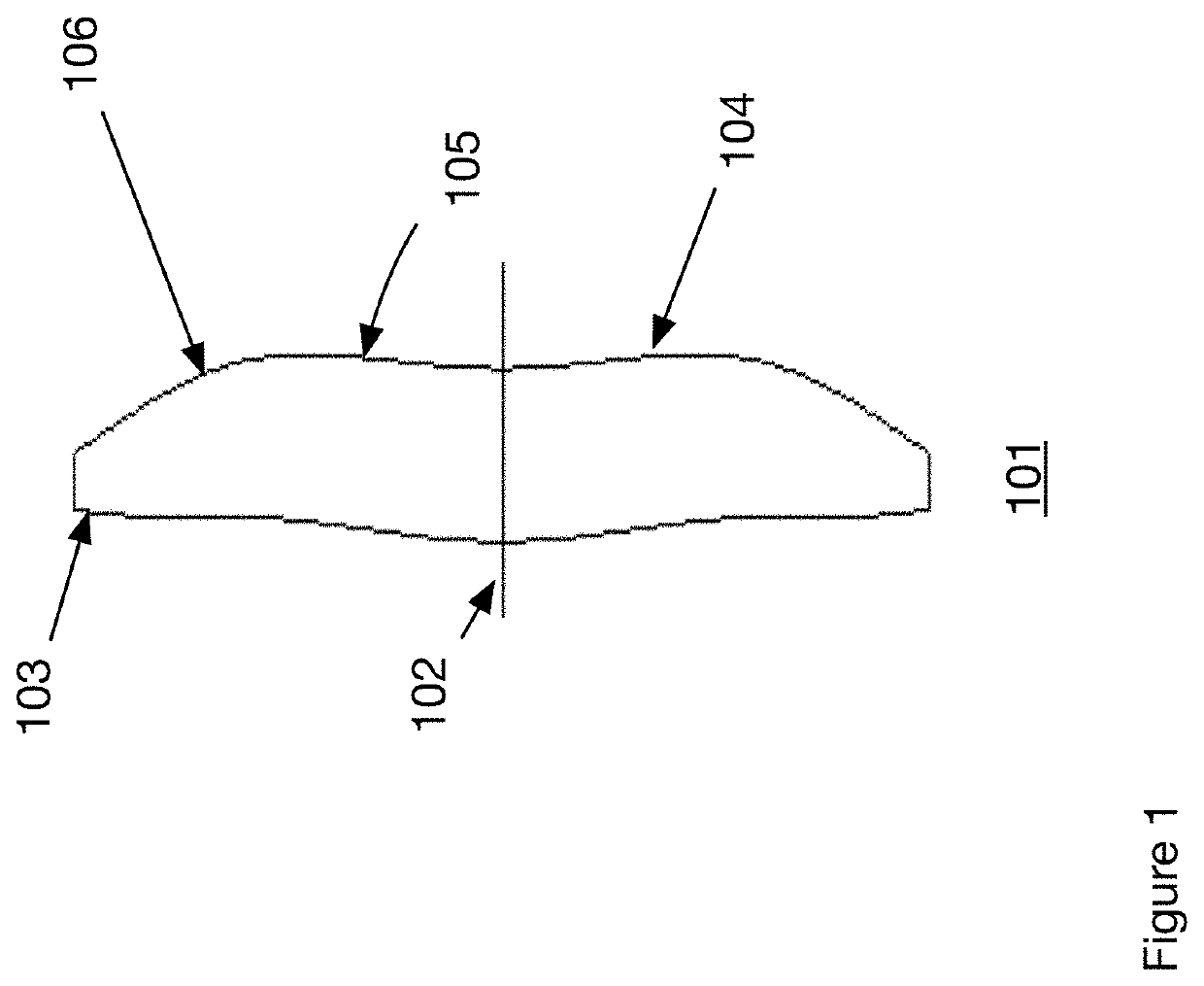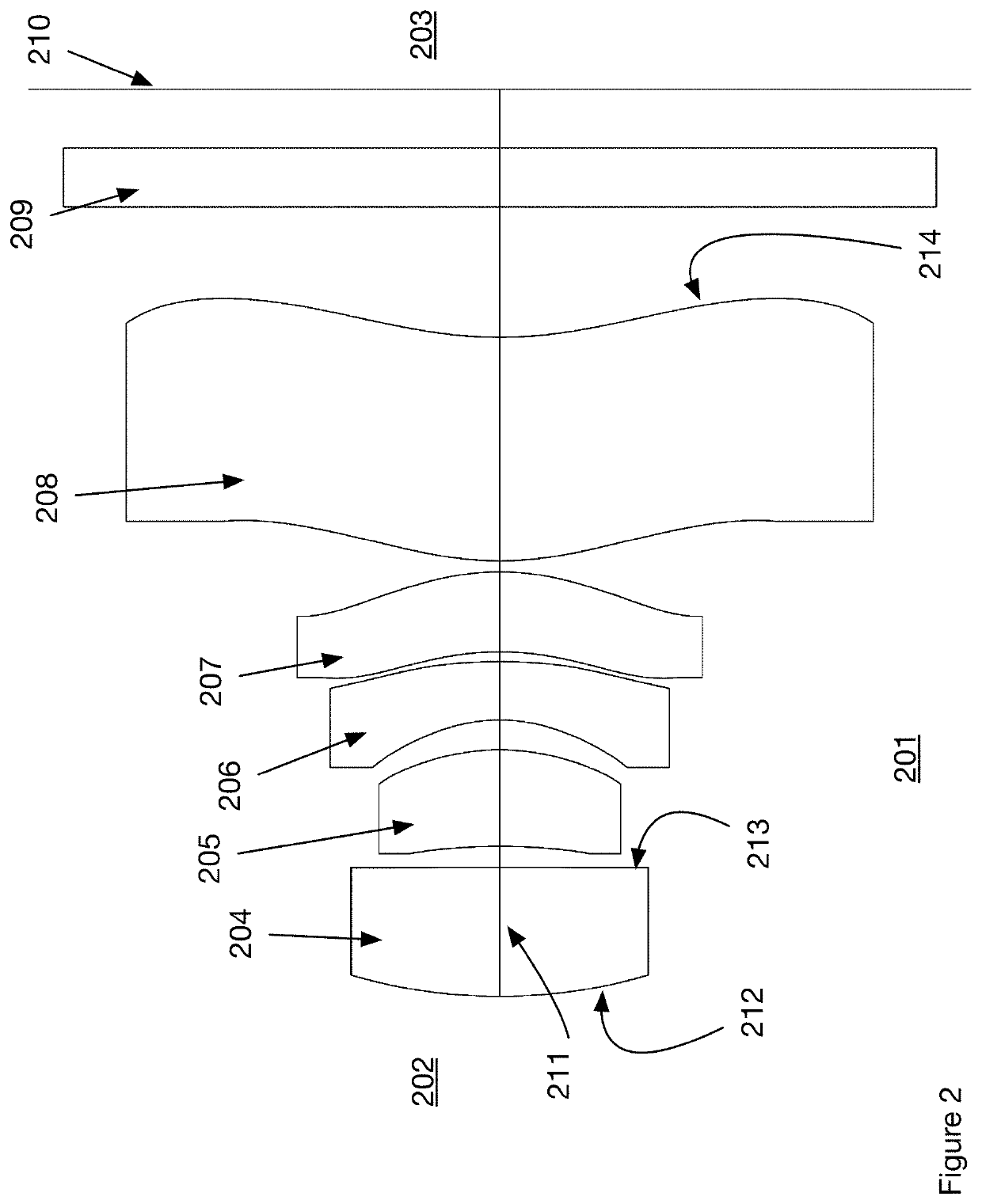Compact wide angle lens with low distortion
a wide angle lens, compact technology, applied in the direction of optics, instruments, optical elements, etc., can solve the problem that the low distortion is critical to the proper functioning of the intended application, and achieve the effect of improving thermal stability and high performan
- Summary
- Abstract
- Description
- Claims
- Application Information
AI Technical Summary
Benefits of technology
Problems solved by technology
Method used
Image
Examples
Embodiment Construction
[0035]Four examples are provided. All examples satisfy the general description provided above as well as the parametric equations 2-9. A summary table of the four examples is provided in Table 1 below.
[0036]
TABLE 1Summary table of Examples 1-4.Example 1Example 2Example 3Example 4F4.729.79.74.71F15.415.12713.7885.418F215.818.53121.67416.494TTL7.714.93614.747.6IH487.9643.875Equation (2) F1 / F1.141.561.421.15Equation (3) F2 / F3.351.912.233.50Equation (9) TTL / IH1.931.871.851.96
[0037]The radius of curvature in all examples is measured at the point on the lens intersecting the optical axis. The description of the lens elements as flat, convex or concave refers to the curvature at the point on the lens surface that intersects the optical axis. The term lens refers to the lens system that is comprised of a plurality of lens elements. Each lens element by itself is also known in the literature as a lens. Here, lens may refer to the multi-component system or an individual lens element within th...
PUM
| Property | Measurement | Unit |
|---|---|---|
| Abbe number | aaaaa | aaaaa |
| field angle | aaaaa | aaaaa |
| field angle | aaaaa | aaaaa |
Abstract
Description
Claims
Application Information
 Login to View More
Login to View More - R&D
- Intellectual Property
- Life Sciences
- Materials
- Tech Scout
- Unparalleled Data Quality
- Higher Quality Content
- 60% Fewer Hallucinations
Browse by: Latest US Patents, China's latest patents, Technical Efficacy Thesaurus, Application Domain, Technology Topic, Popular Technical Reports.
© 2025 PatSnap. All rights reserved.Legal|Privacy policy|Modern Slavery Act Transparency Statement|Sitemap|About US| Contact US: help@patsnap.com



